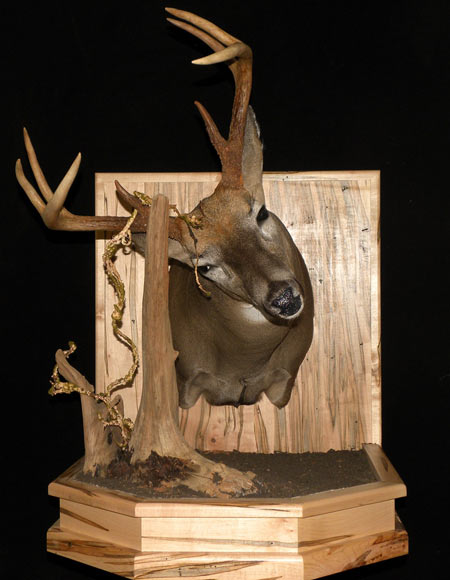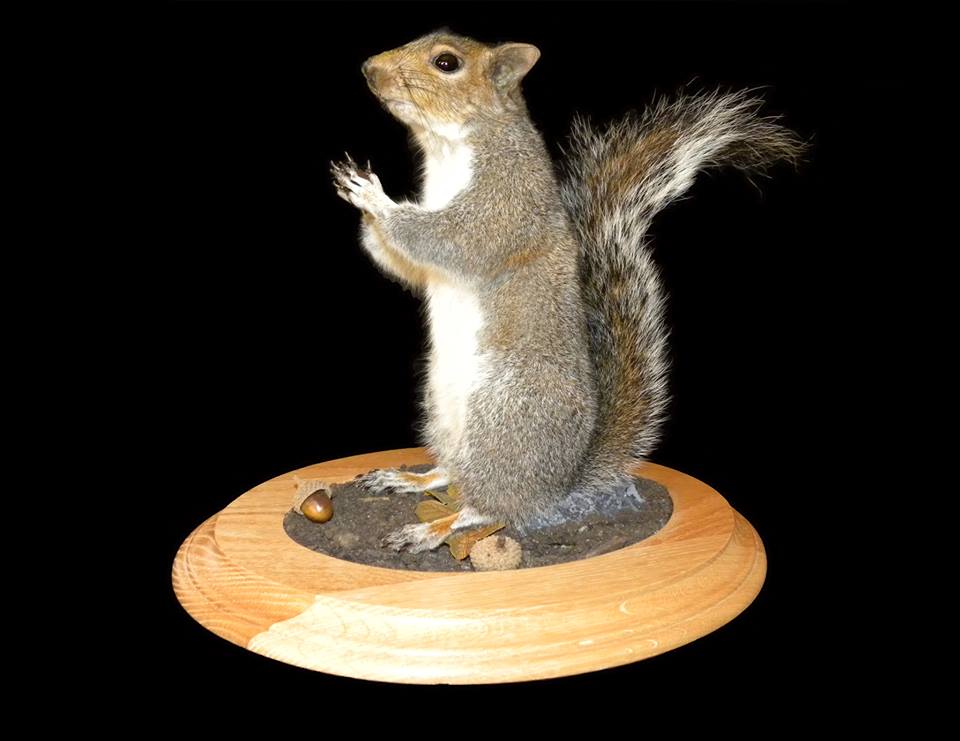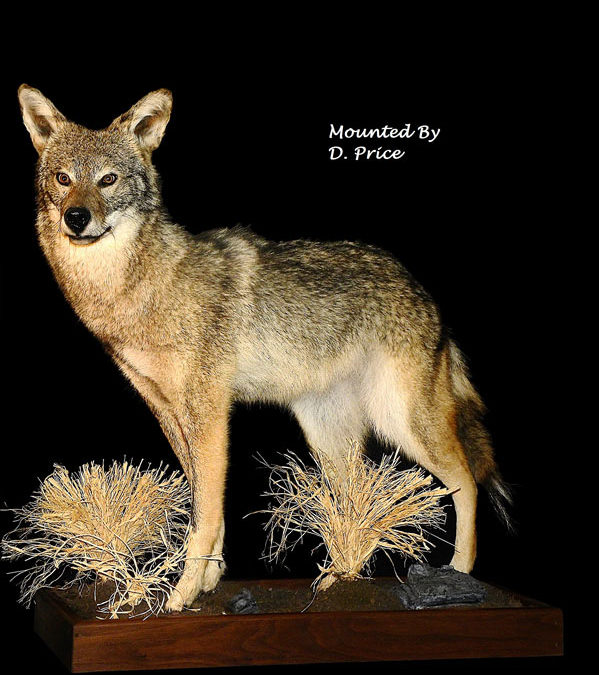Written By Guest Blogger: Emily Huddleston

Whitetail Deer
If you’re a hunter, you likely have some type of animal hanging on your wall at home. You’ve worked hard to harvest your trophy and now you want to have that memorable experience preserved for years to come. As Daniel E. Schmidt of Deer & Deer Hunting put it, “taxidermy displays are not ‘trophies’ of accomplishment, but rather reverent reminders of blessed days afield for hunters.”
With all the time and money you’ve spent on your taxidermy mount, you want it to last a lifetime. However, there is more to owning a mount than simply hanging it on the wall and leaving it untouched.
To better understand how to keep your trophy looking like it did the day you brought it home from the taxidermist, we’ve asked the top experts in the field to give their best tips, tricks, and advice for keeping your trophy in tip-top shape.
Where should I place my trophy mount?
UV rays can wreak havoc on your taxidermy. Ensure the trophy stays out of direct sunlight, as sunlight will cause it to fade and possibly crack.
– Warrick Ferrar, Taxidermy America
Avoid mounting trophies in locations where they might accidentally be bumped. Don’t place your taxidermy in areas with very high or very low humidity, or significant shifts in temperature and humidity – such as a garage or screened-in porch. Also, as appealing as having a big mount over the fireplace may be, the heat that rises from a fireplace isn’t the best thing for a taxidermy mount. Use the fireplace sparingly and make sure there is adequate humidity in the room.
– Toby Asplin, SafariWorks Décor
How do I hang my mount?
Any mount created by a quality taxidermist to be hung on a wall should have a quality hanger on the back. Most shoulder mounts will hang from a single screw, toggle bolt, or lag screw – depending on the weight of the mount.
Screws into wall studs are adequate for most smaller mounts. If the mount needs to hang between studs, utilize a toggle bolt rated for the weight of the trophy. Very large or heavy mounts, should be hung from a lag screw centered on a wall stud.
Alternatively, if the width of the mount is greater than 16”, a mounting plate affixed to two studs provides some flexibility in where the mount is placed between the studs. Be sure the mounting plate is made of wood that will support the weight of the trophy when hung from a lag screw. We recommend avoiding plywood, oriented strand board (OSB) or anything similar.
– Toby Asplin, SafariWorks Décor
How do I properly clean my mount?
Your trophy requires regular care to survive in the long term. If your mount is in a controlled area – free from moisture, heat, and sunlight – you can clean your mount about once a month. If your trophy is in a high dust area, clean it twice per month.
Mammal Care: Clean your prized taxidermy trophies with a soft cloth misted with 409® cleaner. Do not spray the 409® directly onto the mount itself. You do not want to saturate it, you need just enough to clean the dust off and have it stick to the cloth. Wipe with the lay of the hair – never brush the hair or fur back.
Antler and Horn Care: For antlered and horned species, use the same process with the cleaner and simply wipe them down with a soft cloth.
Eye Care: With a cotton swab and just enough 409® or glass cleaner to dampen it (not dripping wet), you can lightly clean the eyes. Be careful not to touch any painted surfaces around the eye itself.
– D. Price, Outback Taxidermy
What do I do about pests?
Once or twice a year, place your trophy in a freezer for a few days to kill any unwanted pests who may be eating at the mount, which can result in fur slippage. For larger pieces or collections with a visible infestation, it’s recommended to bug bomb the entire room.
– Allis Markham, Prey Taxidermy

Eastern Grey Squirrel
Are there any health risks from the chemicals used in taxidermy?
If you take your animal to a professional studio, there should be no worries about chemicals or preservatives that are used in taxidermy. Harsh chemicals are rarely used in the taxidermy process, and the chemicals that are used are not harmful after the process is complete. As with any product you buy, common sense should be used when displaying taxidermy mounts. Keeping mounts out of reach from children and pets is always a good practice.
– Aaron Stehling, Stehling’s Taxidermy
If I’m not displaying my taxidermy, where should I store it?
It is important to keep your mounts in a dark, dry area that is free from bugs. Moths are a big problem for haired mounts. They lay their eggs at the base of the hair and the larva eat where the hair is attached, causing hair loss.
– Shirley Hopkins, A Memory Saved Taxidermy
Are there steps I can take during my hunt to facilitate a successful mounting?
How you transport your animal after a successful hunt is very important. Make sure not to drag the animal on the part that you plan on mounting, so you don’t cause damage to the hide from the friction between it and the ground. For example, if you wish to have a whitetail buck shoulder-mounted, dragging it from its antlers or front legs is better than dragging it from its back legs.
– Andrea Crider, Huntress View
We like to remind hunters that they don’t necessarily need to wait for a hog with big cutters. When the taxidermist mounts their hog, they use a fake (plastic) set of cutters. Most people don’t realize this and spend a lot of time looking for something with big cutters, when in reality the real ones will not be used in the mount.
– Matt Wetzel, Hog Wild OK
With a regular cleaning regiment, keeping your trophies looking clean and fresh can be easy. “Remembering that your mounted trophy is a preserved natural specimen is key,” says Allis Markham of Prey Taxidermy. “Although, the taxidermist has done most of the preservation work beforehand, the rest is up to the owner of the trophy mount.”



